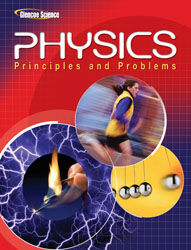1 A) kilometer B) kilogram C) pound D) kilomole 2 A) 0.54 B) 0.542 C) 1 D) 0.5417 3 A) uncertain digits B) significant digits C) powers of 10 D) valid digits 4 3 kg + 8.24×103 kg.A) 1.299x103 kg B) 1.299×104 kg C) 1299×103 kg D) 12,990 kg 5 A) 2.43×10-10 kg B) 2.43×10-11 kg C) 2.43×109 kg D) 2.43×10-7 kg 6 pico is __________.A) 10-15 B) 10-12 C) 10-9 D) 10-6 7 A) foot B) meter C) kilometer D) candela 8 A) calculation coefficient B) notation factor C) conversion factor D) algebraic quantity 9 mega is __________.A) 106 B) 109 C) 1012 D) 1,015 10 A) 5.77 x 105 g B) 5.77×103 g C) 5.77×104 g D) 5.77×106 g 11 A) significant units B) base units C) calculated units D) derived units 12 A) 3.900/7.200 B) 3.9000/ 7.20 C) 3.900/7.20 D) 3.9000 / 7.2000 13 micro is __________.A) 10-15 B) 10-12 C) 10-9 D) 10-6 14 A) 14.5×103 m B) 1.45×10-3 m C) 0.145×10-3 m D) 1.45×103 m 15 femto is __________.A) 1015 B) 39733 C) 10-9 D) 10-6 16 A) minute B) hour C) millisecond D) second 17 deci is __________.A) 101 B) 102 C) 10-1 D) 10-2 18 A) imprecise measurement B) inaccuracy C) parallax D) faulty instruments 19 In the figure below, if a fourth student measured the spring's length to be 14.2 ± 0.2 cm, would this agree with any of the other students' measurements?
<a onClick="window.open('/olcweb/cgi/pluginpop.cgi?it=jpg::::/sites/dl/free/0078807220/617909/la.JPG','popWin', 'width=NaN,height=NaN,resizable,scrollbars');" href="#"><img valign="absmiddle" height="16" width="16" border="0" src="/olcweb/styles/shared/linkicons/image.gif"> (9.0K)</a> A) Yes, it agrees with only student 1. B) Yes, it agrees only with student 3 C) Yes, it agrees with students 1 and 3. D) No. 20 A) Significance B) Accuracy C) Certainty D) Precision 21 A) Precision B) Significance C) Certainty D) Accuracy 22 A) slope B) rise C) intercept D) tangent 23 Extrapolating from the figure below, if a mass of 45.0 g were hung on the spring, how long would the spring be?
<a onClick="window.open('/olcweb/cgi/pluginpop.cgi?it=jpg::::/sites/dl/free/0078807220/617909/lb.JPG','popWin', 'width=NaN,height=NaN,resizable,scrollbars');" href="#"><img valign="absmiddle" height="16" width="16" border="0" src="/olcweb/styles/shared/linkicons/image.gif"> (13.0K)</a> A) 17.3 cm B) 576 cm C) 3.6 cm D) 46.1 cm 24 A) acceleration of a moving object exhibiting uniform motion B) angular velocity C) the slope of a straight line D) the angle of a straight line 25 In the figure below, what is the physical meaning of the value for b?
<a onClick="window.open('/olcweb/cgi/pluginpop.cgi?it=jpg::::/sites/dl/free/0078807220/617909/lb.JPG','popWin', 'width=NaN,height=NaN,resizable,scrollbars');" href="#"><img valign="absmiddle" height="16" width="16" border="0" src="/olcweb/styles/shared/linkicons/image.gif"> (13.0K)</a> A) It is the distance from the bottom of the spring to the suspended mass. B) It is the length of the spring when no masses are suspended from it. C) It is the length of the spring when the experiment is over. D) It is the distance from the top of the spring to the suspended mass.














